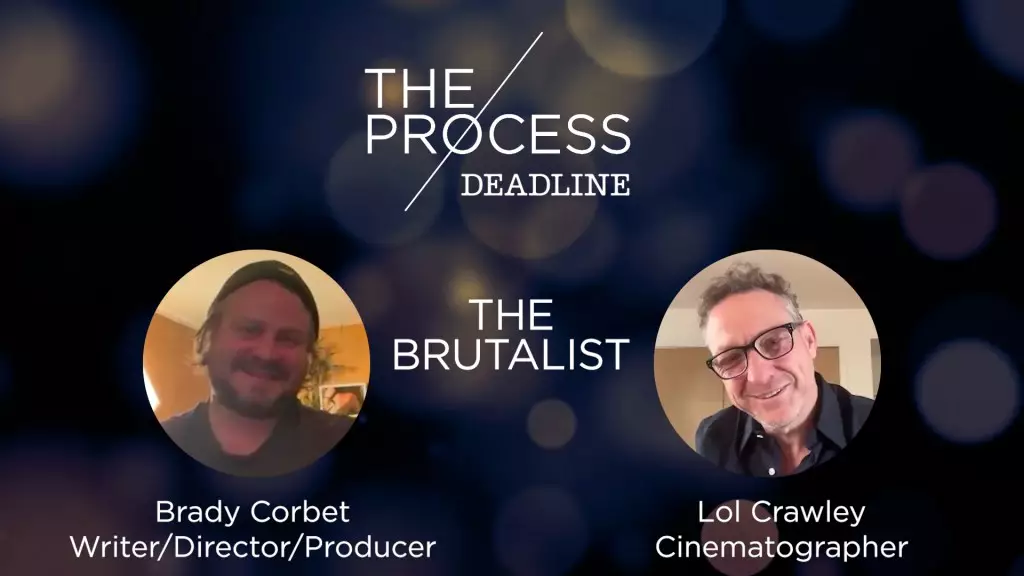Director Brady Corbet and cinematographer Lol Crawley have established a creative synergy that transcends the usual director-cinematographer dynamic in film. Their latest collaboration, “The Brutalist,” marks the third time they have worked together in less than a decade, following the audacious “Vox Lux” and the thought-provoking “The Childhood of a Leader.” This series of collaborations highlights not only their evolving artistic relationship but also their mutual commitment to crafting narratives that spark conversation. During a candid discussion for Deadline’s “The Process,” Corbet acknowledged that their films have often been labeled ambitious—an adjective that carries dual meanings, often swayed by audience reception. Corbet’s admission of his initial creative restraint reveals how his vision transforms during the filmmaking process, growing broader when brought to life by a diverse team of passionate contributors.
Corbet elaborated on the evolution from screenplay to film, expressing that while he may conceive his stories in a carefully contained realm, the collaborative atmosphere during pre-production and shooting allows for expansion. This transformation fosters a cinematic universe that feels both intimate and grand. His initial “myopic” perspective expands as the numerous contributions from various departments converge to shape the final product. Unlike many filmmakers who grapple with anxiety over whether their vision will translate to the screen, Corbet has come to trust the process. This faith is grounded in the understanding that every member of the film crew, each contributing their unique skill set, plays a vital role in shaping the outcome.
The conversation took a fascinating turn as Crawley chimed in on the importance of visual language in cinematic storytelling. He remarked that Corbet’s pursuit of ambitious shots and pivotal scenes is not merely about spectacle. Instead, the true power of these choices lies within a single, well-executed shot that speaks volumes through its composition and the performances captured within it. This focus on both the spatial and emotional dimensions of film is what differentiates “The Brutalist” from conventional cinematic endeavors. It demonstrates how film can communicate complex narratives without losing the essence of character-driven storytelling.
Drawing on their experiences within the often chaotic environment of a film set, Corbet offered an unfiltered view of the toll that the filmmaking process can take. He humorously shared that sleep deprivation and stress are almost ritualistic elements of production, creating a surreal space where dozens of individuals are committed to a singular vision yet bound by an ongoing cycle of exhaustion. Crawley’s response emphasized how this endless repetition could be daunting for outsiders—a reminder that on-set experiences often do not reflect the glamour associated with filmmaking. Instead, it can resemble a bustling factory filled with focused but fatigued professionals working tirelessly toward a common goal.
Set in the post-World War II era, “The Brutalist” is anchored in the poignant story of László Tóth, portrayed by Adrien Brody. A Hungarian-Jewish architect, Tóth’s journey is steeped in tragedy as he navigates the aftermath of the Holocaust while seeking a new life in the United States. His narrative is made more complex by the presence of his wife, Erzsibet (Felicity Jones), who remains trapped in Eastern Europe, waiting for liberation along with their niece, Zsófia (Raffey Cassidy). This layered storytelling resonates deeply, revealing not only the societal struggles of the time but also the personal battles that define the human experience.
As “The Brutalist” garners attention on the awards circuit, including recognition at the Golden Globes and multiple Oscar nominations, it is clear that the film has struck a chord with critics and audiences alike. Its focus on ambition—both in storytelling and in the lives of its characters—creates an engaging viewing experience that invites deeper reflection. The narrative’s gravity and the creative team’s commitment to excellence remind us that the essence of cinema lies not only in its visual splendor but in its ability to provoke thought and empathy.
“The Brutalist” serves as a testament to the beauty of collaborative filmmaking, capturing the essence of ambition in both process and story. This film stands as a reminder that while the journey might be fraught with challenges, the end product can resonate profoundly, leaving an indelible mark on the landscape of modern cinema.

Leave a Reply